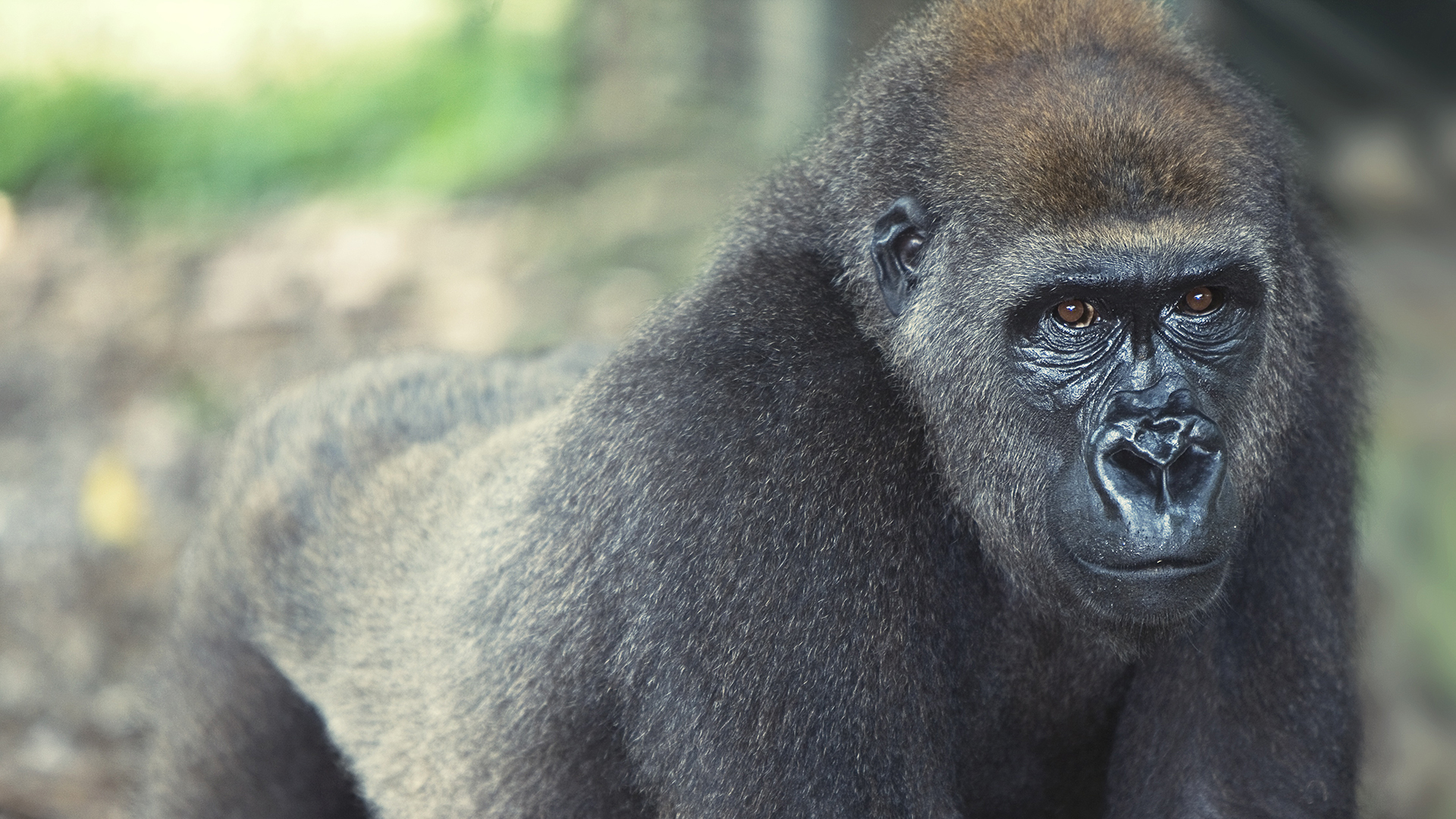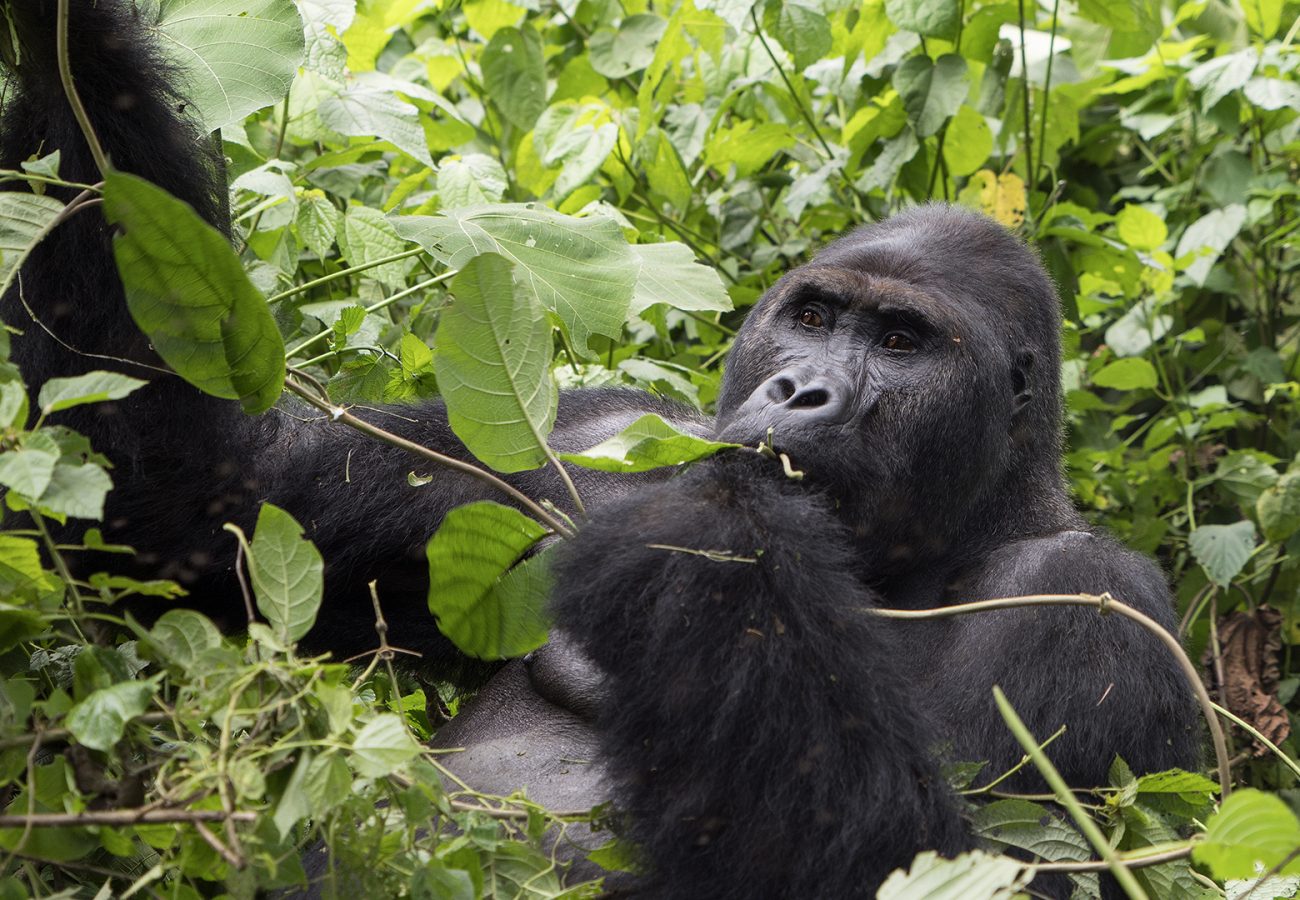Gorillas face many threats in the wild. These include illegal hunting and bushmeat trade, habitat loss, fragmentation and degradation, the spread of disease, and climate change. Both species of gorilla, the eastern gorilla and the western gorilla, are considered Critically Endangered by the IUCN.
In collaboration with our partners, Born Free is conserving gorillas in the rainforests of Cameroon. These holistic conservation programmes are working to reduce illegal poaching and preserve forest habitat.
Read more about these programmes, and how they’re helping gorillas, below.
GORILLA CONSERVATION EFFORT
GUARDIANS OF DJA
LOCATION: Dja Biosphere Reserve, East Region, Cameroon, Central Africa.
GOAL: To increase rare central chimpanzees and western lowland gorillas in the Dja Biosphere Reserve (DBR), Cameroon. To enable local people and wildlife to coexist sustainably.
THREATS: The DBR is home to many rural communities such as the Badjoue and the Bantu. These communities are classed as “poor” or “extreme poor”. Their traditional livelihoods rely on unsustainable and damaging activities in the forest, such as bushmeat hunting and slash-and-burn farming.
Bushmeat hunting for local consumption and sale is widespread in this region of Africa, as well as poaching for the illegal wildlife trade markets. Activities that harm the forest, such as slash-and-burn farming, further threaten the remaining chimpanzees and gorillas.
ACTIONS: The Guardians of Dja programme currently operates in six villages in the north-eastern periphery of the Dja Biosphere Reserve.

Western Lowland Gorilla in the Dja © MPI-EVA PanAf
Born Free support staff to deliver training courses in sustainable agroforestry practices. Students are empowered to develop a reliable trade in cocoa and pepper, using sustainable agroforestry methods. Farmers are encouraged to re-use previously farmed land (fallows) using composting to bring nutrients back to the soil. The programme also provides primary education at a school, which can teach 100 pupils per year. Students at the school receive ten hours of conservation lessons a week and the staff receive conservation training.
The Guardians of Dja programme supports at least two anti-poaching patrols each year, and has also recruited 12 ‘Great Ape Guardians’ from local communities. These guardians patrol, gather information on bushmeat hunting and help others in the community to understand the importance of great ape conservation.
Finally, the programme aims to actively restore degraded areas of forest to benefit great apes, and other wildlife. Several nurseries have been set up to provide a mix of native trees and food crop trees to reforest these areas.


